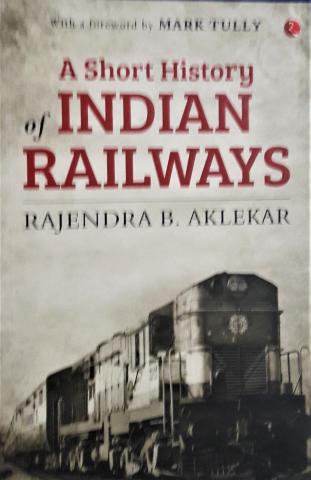
As the name implies, the book is a history of the Indian Railways. But with a significant and welcome difference. It is not merely a chronicle of milestones and events in the chequered history of this vibrant organisation; it is not just a log of dates and schedules over the last 150 and more years; it is not like any of the myriads of rail histories that are available to the reader. The book is a collection of railway tales and a bringing together of anecdotes to string them into a continuous narrative of the development and evolution of the railways in our country. It is thus not heavy reading but can be read as a publication of short stories. By adding a personal touch, the author's narratives are more readable and better received. Examples of this personal touch include, inter alia, a visit to Royapuram, the oldest working railway station in the country, and a hearty chat with Shudhanshu Mani, the creator of Train 18, aka the Vande Bharat Express, the semi-high speed train introduced in 2019.
For those who may find even these spirited stories dry and dreary, Aklekar has added humour to some of the tales. The example below, reproduced from the book, will illustrate the point:
There is a story about an angry passenger who complained to a railway official that he had a cinder in his eye from one of the engines, and it cost him £1 to have it taken out and have his eye seen by a doctor.
The aggrieved passenger asked: ‘What are you going to do about it?’
To this the official answered tactfully, after saying that he was sorry to hear of the problem, ‘We shall do nothing, Sir! We have no further use of the cinder, and from a legal point of view, the cinder was not yours. No doubt we could institute proceedings against you for removing our property, but in this case, we shall take no further steps in the matter.’
In the Foreword to the book, the inimitable Sir Mark Tully sums up the book most appropriately. He writes that ‘His (Aklekar’s) stories instruct and entertain, bringing the past of the Indian Railways alive in the present. They will entertain as well as instruct, thereby encouraging Indians to be proud of their railway’s past and ensure that those railways play a crucial role in the future.’
For any rail aficionado, rail fan or rail historian, a book that must adorn his or her bookshelf.
